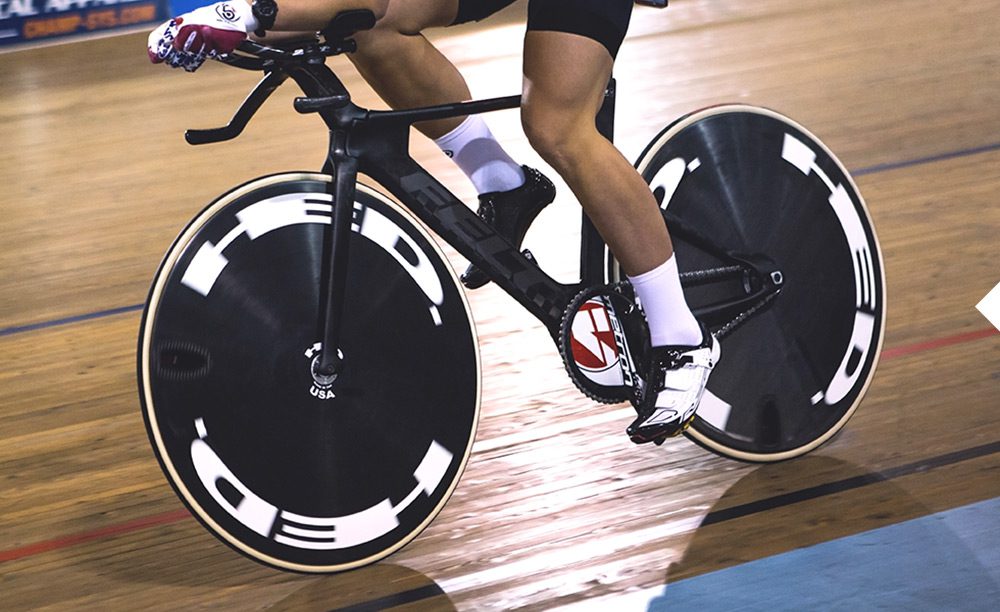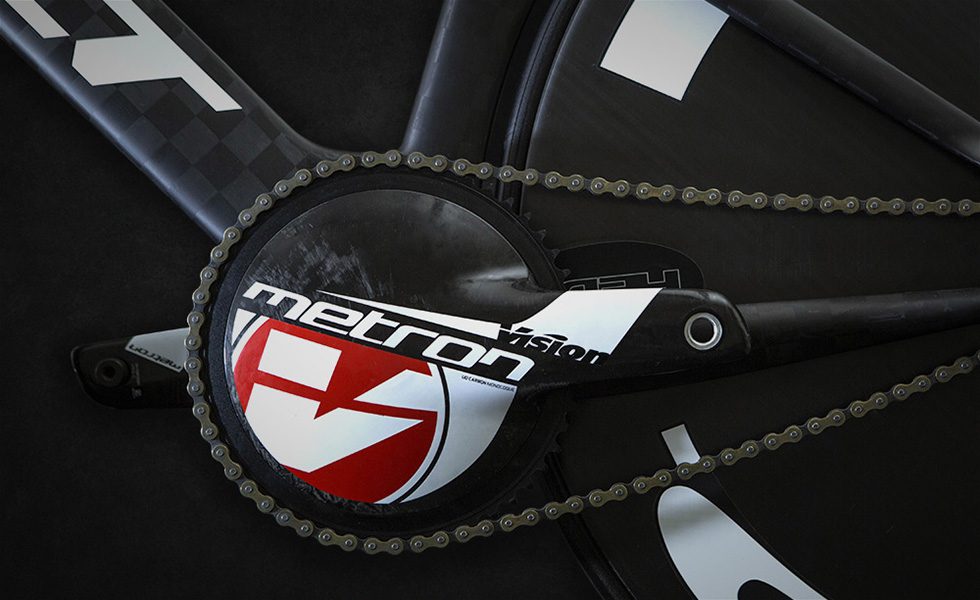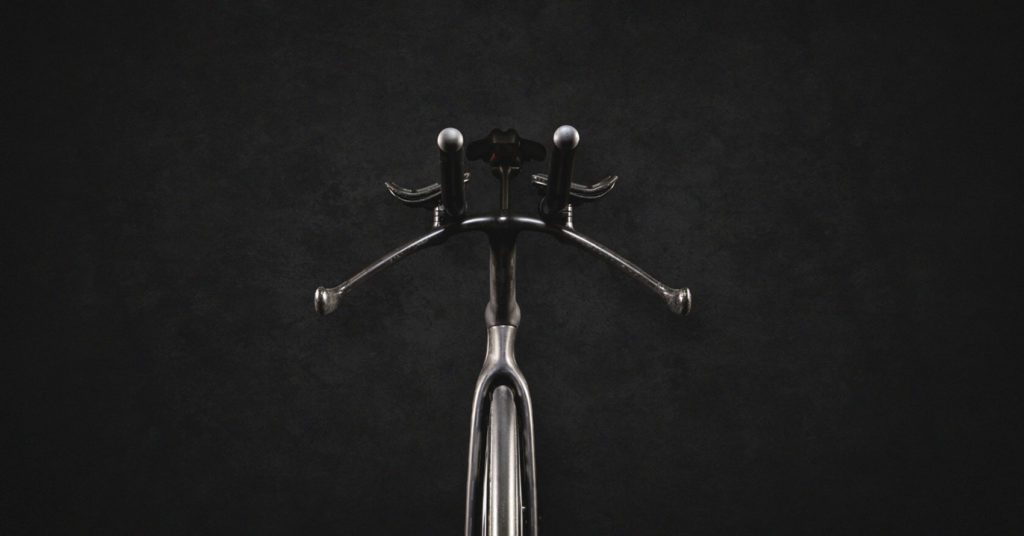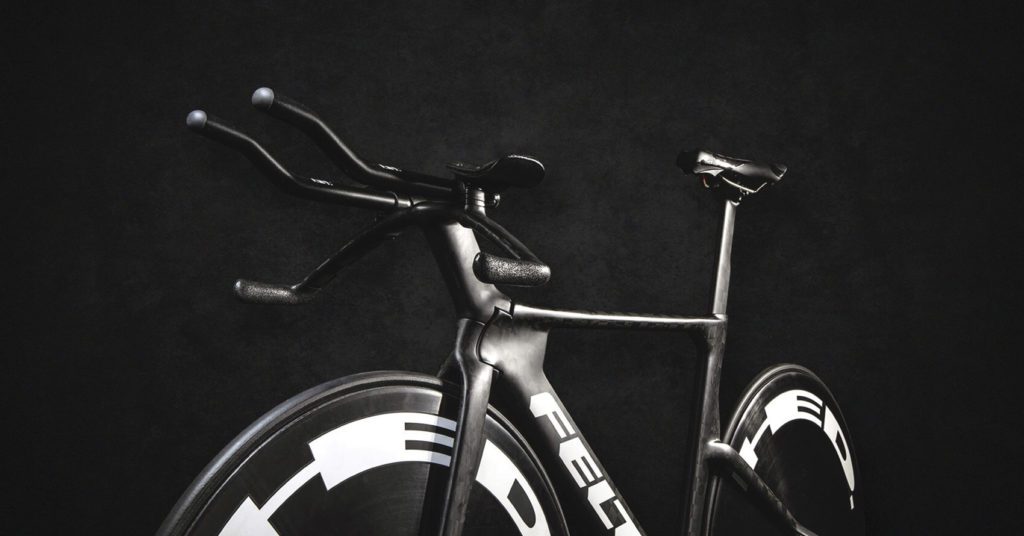Felt’s leftside-drive track bike designed specifically for the Olympics
Team USA will use a pursuit specific Felt designed to give athletes a winning edge at Olympics

Felt have designed a track bike with a unique build to give Team USA’s women’s pursuit squad a winning edge at the 2016 summer Olympics in Rio de Janiero. The U.S. women’s team defeated Canada at the London world championships in March and head to Rio with ambitions of bringing home a gold metal. To help with the pursuit of their goal, Felt have introduced a specialized bike that is geared towards addressing the very specific aerodynamic conditions of track racing.
RELATED: Gallery: Trek and Cannondale aero bikes at the Tour of California

Felt’s new pursuit-specific bike they are calling the TA/FRD (Track Aero/Felt Racing Development) has a leftside drivetrain and specially designed ultra-narrow aero tube shapes. The lefthand-side drive train is the bikes most notable feature and is designed to make the bike more aerodynamic.

“We conducted a lot of research regarding airfoils inside a velodrome,” said Anton Petrov, head of aerodynamics at Felt Bicycles. “As part of our initial research, we found that there exists a specific range of yaw on the track and that it is not asymmetric airflow. So we set out to design a bike with asymmetric cross sections. With this, you’ll get an airfoil that will work better from one side than it does from the other. And if you have asymmetric airflow, you then optimize shapes for that flow. And the end result is a faster bike. The TA FRD is designed specifically for the velodrome.”

The researchers found that the curves of the velodrome walls and the motion of the riders on the track created unique conditions. Felt’s engineers set about designing a bike that addressed these specific conditions found only on velodromes.
“Just like with the asymmetry of the cross sections, we found that the bikes typically test faster when the airflow is from the drive side of the bicycle,” says Petrov. “So a traditional crankset is on the right-hand side of the bike, which we found to be the incorrect side for the velodrome, aerodynamically speaking. From a rider’s perspective, you’re not losing anything by having the crank on the opposite side. But again, aerodynamically, that makes a huge difference.”

Jeff Soucek, director of engineering at Felt Bicycles elaborated, “Wind is coming in towards the frame from the left-hand side. So by moving the drive side on the bike from the outside of the track [right-hand] to the inner part of the track [left-hand], not only does the bike become more aerodynamic, it also helps with moving the weight and center of gravity inboard, as well. Other things like the narrow front and rear hubs and a lot of various small features have gone into the bike to make it very unique and incredibly fast.”
The bike was developed with a very specific goal allowing them to engineer a bike that met the specific needs of the track athletes without any constraints related to creating a product that would be sold to the masses.

“I think it’s very safe to say that nothing like this has ever been created before,” said Andy Sparks Team USA head coach. “So our riders who are going into Rio have an advantage that really symbolizes everything that we’re really proud of in the U.S.”
